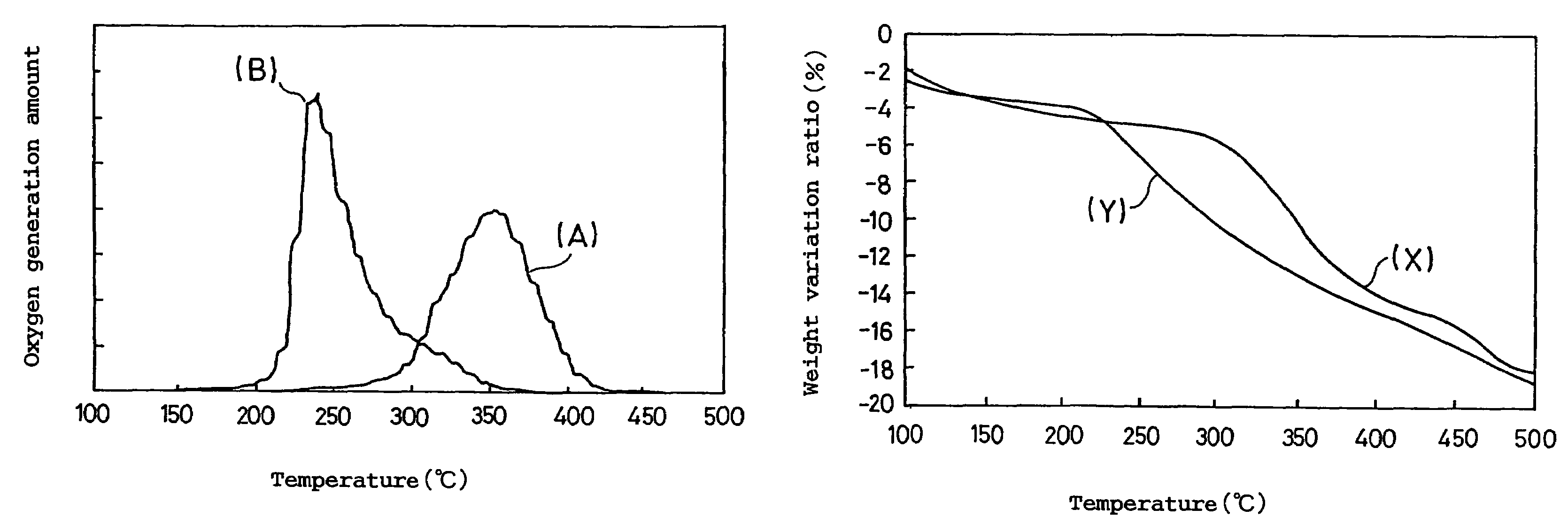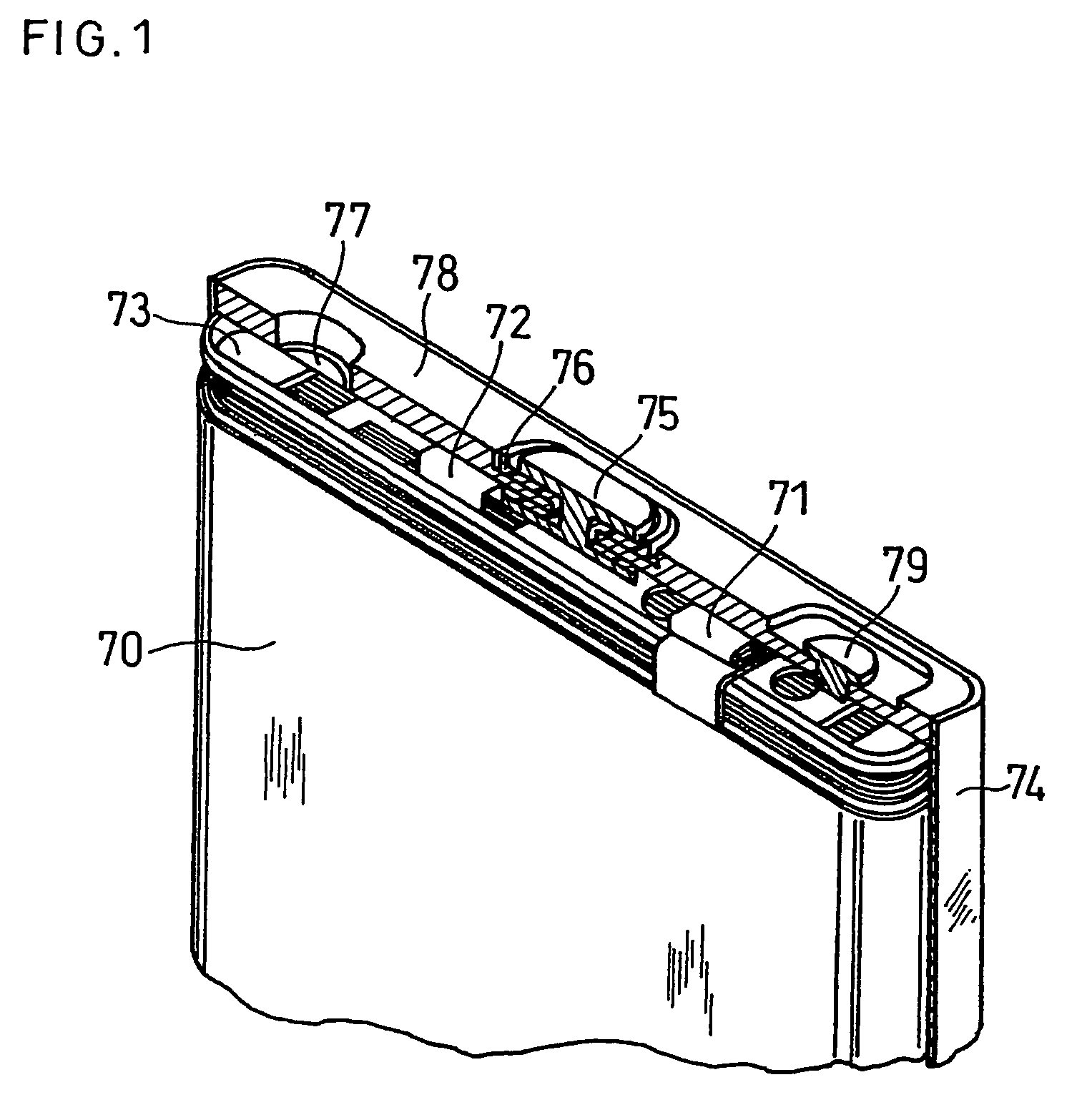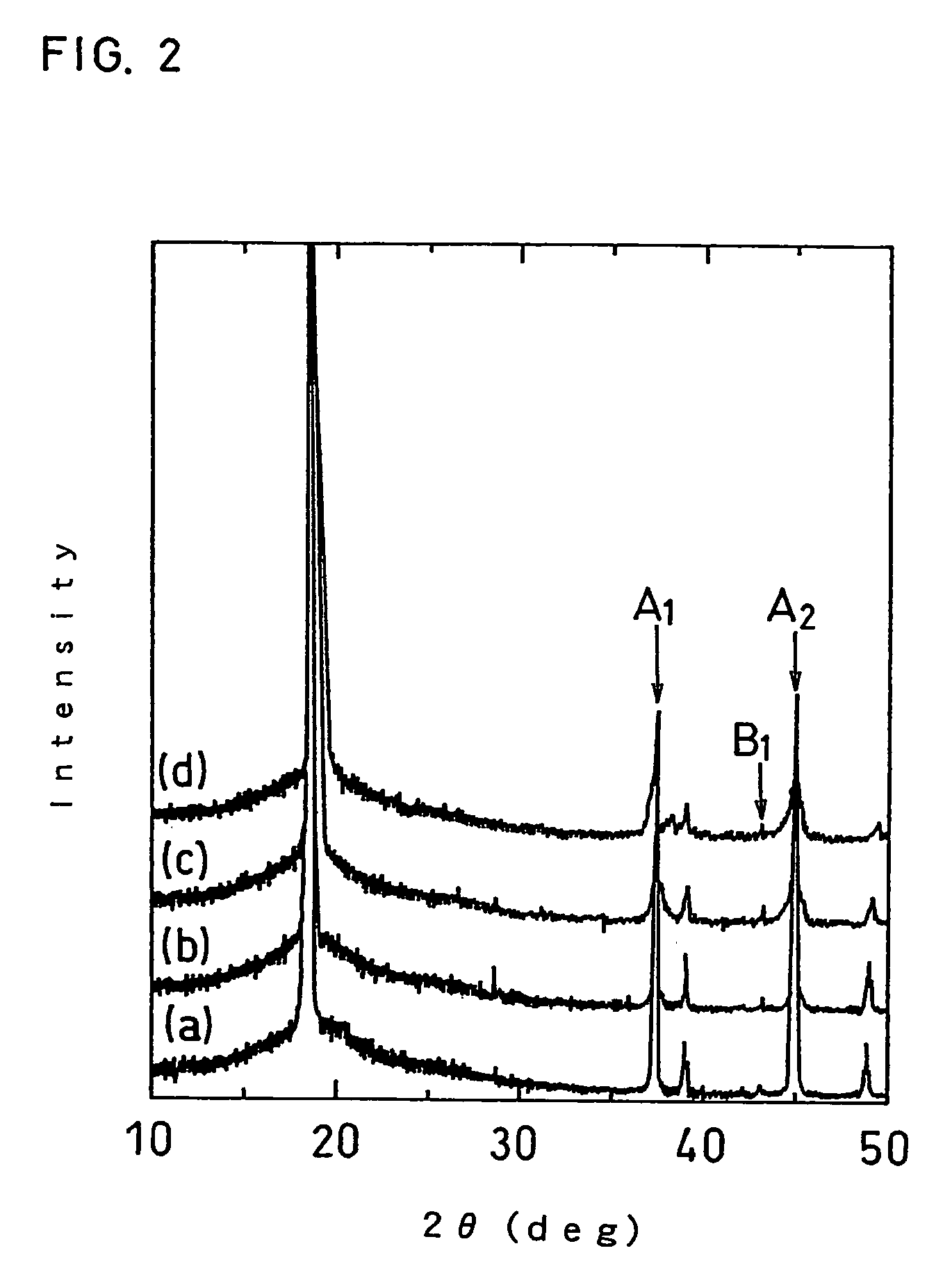Positive electrode active material for non-aqueous electrolyte secondary battery
- Summary
- Abstract
- Description
- Claims
- Application Information
AI Technical Summary
Benefits of technology
Problems solved by technology
Method used
Image
Examples
example 1
(i) Preparation of Positive Electrode Active Material
[0046]A eutectic hydroxide with cobalt and magnesium incorporated therein at a mole ratio of 0.945:0.05 was prepared.
[0047]The prepared eutectic hydroxide was mixed with aluminum hydroxide and lithium carbonate to obtain a raw material mixture containing cobalt, magnesium, aluminum and lithium at a mole ratio of 0.945:0.05:0.005:1.01.
[0048]Next, the obtained raw material mixture was baked in an air atmosphere at 1050° C. for 10 hours to obtain a positive electrode active material: Li1.01Co0.945Mg0.05Al0.005O2. This active material satisfies: z=1.01, x=0.05 and y=0.005.
(ii) Production of Positive Electrode
[0049]100 parts by weight of the above obtained Li1.01Co0.945Mg0.05Al0.005O2 was added with 3 parts by weight of acetylene black as a conductive agent, 7 parts by weight of polytetrafluoroethylene as a binder, and 100 parts by weight of a 1 wt % carboxymethyl cellulose aqueous solution, which was stirred and mixed to obtain a past...
examples 2 to 6
[0065]In Examples 2 to 6, in preparation of positive electrode active materials, titanium oxide, strontium hydroxide, manganese oxide, nickel hydroxide and calcium hydroxide were used, respectively, in place of aluminum hydroxide.
[0066]In the same manner as in Example 1 except for what was described above obtained respectively were: the positive electrode active material: Li1.01Co0.945Mg0.05Ti0.005O2 in Example 2; the positive electrode active material: Li1.01Co0.945Mg0.05Sr0.005O2 in Example 3; the positive electrode active material: Li1.01Co0.945Mg0.05Mn0.005O2 in Example 4; the positive electrode active material: Li1.01Co0.945Mg0.05Ni0.005O2 in Example 5; and the positive electrode active material: Li1.01Co0.945Mg0.05Ca0.005O2 in Example 6.
[0067]These active materials satisfy: z=1.01, x=0.05 and y=0.005.
[0068]In each of Examples, a prismatic lithium-ion secondary battery was assembled in the same manner as in Example 1 except for the use of the aforesaid active material, and the ...
example 7
[0070]Except that the raw material mixture was baked in an air atmosphere at 1050° C. for 10 hours and then re-baked in an air atmosphere at 700° C. for 10 hours, a positive electrode active material: Li1.01Co0.945Mg0.05Al0.005O2 was obtained in the same manner as in Example 1. This active material satisfies: z=1.01, x=0.05, y=0.005.
[0071]A prismatic lithium ion secondary battery was assembled in the same manner as in Example 1 except for the use of the above obtained active material, and the stability of the battery when overcharged was evaluated by the GC / MS measurement in the same manner as in Example 1. The result is shown in Table 2.
PUM
 Login to View More
Login to View More Abstract
Description
Claims
Application Information
 Login to View More
Login to View More - R&D
- Intellectual Property
- Life Sciences
- Materials
- Tech Scout
- Unparalleled Data Quality
- Higher Quality Content
- 60% Fewer Hallucinations
Browse by: Latest US Patents, China's latest patents, Technical Efficacy Thesaurus, Application Domain, Technology Topic, Popular Technical Reports.
© 2025 PatSnap. All rights reserved.Legal|Privacy policy|Modern Slavery Act Transparency Statement|Sitemap|About US| Contact US: help@patsnap.com



